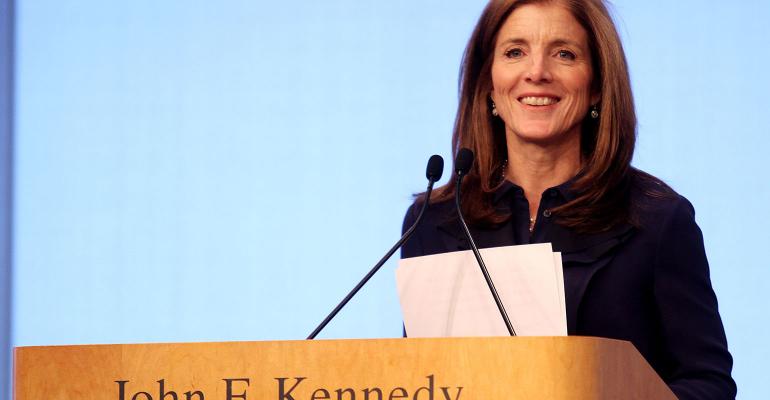Many people spend a lifetime searching for that elusive yet vital calling: a life’s purpose. No one on their deathbed wishes more hours were spent at the office.
It’s also surprisingly rare to long for one more day of golf or other leisurely pursuit. What becomes clear at the end of our lives is they are infused with true meaning and purpose based on our connection to others. And fundamental connections begin with family.
What if this primary connection was nurtured to include a shared purpose serving as the foundation and bellwether for decision making? Not only would family members’ lives be guided by meaning, family unity would be rooted in vision where everyone participated.
This offers families a springboard and clear direction for the future. When purpose is absent, families often crumble—first emotionally and later financially. However, if family unity is perpetuated by a support structure inherent to how individuals relate to the whole, great things can happen—a family dynasty can affect influence over the future—and the resources to do this with impact are preserved (and ideally increased over time).
When the younger generations lack a sense of clear connection and direction, there’s a substantial likelihood the wealth will be destroyed by the third generation. However, according National Public Radio, “People Who Feel They Have A Sense of Purpose Live Longer.” This connects well-being to purpose—we see the direct connection to the preservation and perpetuation of wealth. The “aimless wandering through life” of the younger generations, common when families do not plan and communicate openly about what they value both materially and emotionally, can be stopped.
Infusing this purpose within a family so as to “make it stick” can take many forms. If it’s set up as a philanthropic or charitable organization, there are a variety of options including private foundations, charities, events or organizations within a larger framework (i.e., a family business) with a specific directive. It’s crucial to remember: The future of one’s family is not the future of one’s money. Vital life lessons are best practiced and learned in action—and repeated often. If the head of the family offers heirs an opportunity to model their behavior after their own, the chances of success are vastly increased. This allows the stories, life lessons and action itself to be woven into family tradition, seen and practiced.
If families lack a common purpose, as was the case with William Vanderbilt’s family, emotional discord invariably manifests as financial ruin. If subsequent generations of his clan hadn’t spent so lavishly, their total fortune would be worth $4.8 billion in today’s dollars. However, by 1973, in just two generations, not a single heir was even a millionaire. This cycle can be broken though, as families with a well-expressed purpose tend to thrive through stronger interpersonal relationships, a greater mastery of their wealth and a responsibility to educate the next generation.
When Roy Williams and Vic Priesser collected data for their groundbreaking study of 3,250 families who had lost their wealth, less than 3 percent said poor planning and investments were cause for reversal of fortune. Some 25 percent said heirs were unprepared, and 60 percent replied it was lack of communication and trust in the family. Changing those statistics begins with communication.
Families who create a shared experience encourage growth around their family’s legacy and build a foundation for success. No matter how masterful the work of tax attorneys, professional investors and others managing a family’s assets, the statistics ring true when there are not clear avenues for education and communication.
A family’s shared vision can be explored in a number of ways—the key is consistent execution and implementation beginning when heirs are young. When ongoing, regularly scheduled conversations and meetings about the family’s purpose, as it relates to their wealth, become part of their calendar, a regular structure is created. The family’s activities, plans for the future, shared ideas and some fun thrown in has been proven to make a world of difference—and reverse the statistics above. The goal of the gatherings is to promote family unity through team building, leadership, shared responsibility and active conversations. This is the time, year after year, when families renew their commitment to making healthy decisions, nurturing family harmony and recommitting themselves to their shared purpose. The ultimate goal is to provide each family member the support needed to live a meaningful and fulfilled life.
Families may choose to create a permanent record of such meetings. Video and audio recordings can document their stories, traditions and what’s important to them by capturing their values in their own unique voices. Often when a family member reads the transcription or listens to their own audio recording or watches their video, they tend to find the experience insightful. And it has proven to be invaluable for subsequent generations to have this record in order to truly understand and appreciate their predecessors and know the way forward.
An emphasis on communication—primarily listening, empathy, leadership, personal and family development, and teamwork—will continue to underscore and refine a family’s purpose so as to allow subsequent generations to make the experience their own. At present, this is where video is often used. A family’s activities, as well as their reactions to discussions, are captured and preserved.
Steven Abernathy counsels affluent families on multi-generational wealth management strategies.





